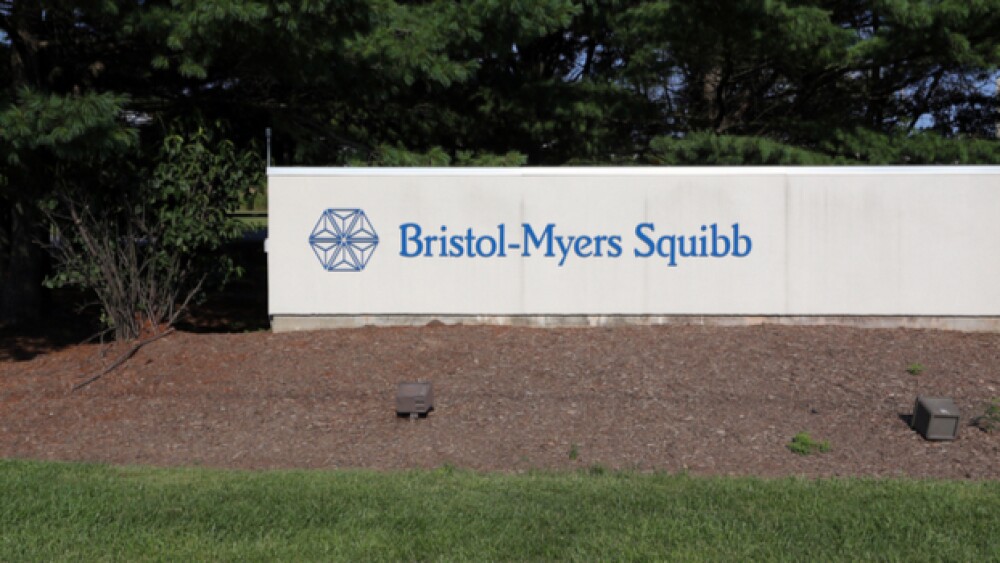BMS inked a multi-year strategic agreement with Concerto HealthAI, which focuses on oncology-specific Real-World Data (RWD) and advanced AI for Real-World Evidence (RWE) generation.
Katherine Welles / Shutterstock.com
Bristol-Myers Squibb is yet another pharma company interested in using artificial intelligence (AI) to help it identify and develop drugs. BMS inked a multi-year strategic agreement with Concerto HealthAI, which focuses on oncology-specific Real-World Data (RWD) and advanced AI for Real-World Evidence (RWE) generation.
Bristol-Myers Squibb plans to use Concerto’s Real-World Data and AI platform eurekaHealth to speed up the process “through novel health economic outcomes and clinical development synthetic control arm studies.”
“With the increasing importance of Real-World Data and Real-World Evidence, healthcare providers and regulators need to have confidence in the credibility and accuracy of the data sources and methods of evidence generation,” stated Jeff Elton, chief executive officer of Concerto Health AI. “Our agreement with Bristol-Myers Squibb is a recognition that we have reached a pivot-point for RWE—it is not just a tool for generating insights into the current standard of care, but a field in its own right that can lead to optimization of current treatments and new therapeutic innovations.”
On January 28, the U.S. Food and Drug Administration (FDA) Commissioner Scott Gottlieb laid out the FDA’s new framework for dealing with RWE and RWD. RWE and RWD relate to the collection of information about a drug’s safety and efficacy outside the structure of a clinical trial. They are typically collected from electronic health records (EHR), laboratory tests, wearable devices, insurance claims, and potentially even social media.
At his presentation before the Bipartisan Policy Center, Gottlieb said the FDA’s guidance on this was not an indictment of the randomized controlled clinical trial. “It’s a recognition that new approaches and technologies can help expand the source of evidence that we can use to make more reliable treatment decisions. And it’s a recognition that this evidence base can continue to build and improve throughout the therapeutic life of an FDA approved drug or medical device.”
The FDA framework and the 21st Century Cures Act accelerated adoption of RWE-based approaches to clinical trials and post-approval studies.
Concerto HealthAI, among other things, integrates data from a variety of sources including CancerLinQ. CancerLinQ collects and analyzes real-world data from medical practices nationally, providing insight to physicians and researchers. It is developed and operated by CancerLinQ, a nonprofit subsidiary of the American Society of Clinical Oncology (ASCO).
Bristol-Myers Squibb is not the only pharma company jumping into the AI arena. Recursion Pharmaceuticals is another AI and machine learning company and it is collaborating with Takeda Pharmaceutical on identifying novel preclinical candidates for rare diseases.
San Francisco-based Atomwise uses AI based on convolutional neural networks, the same tech used in facial recognition and self-driving cars, to search for drugs. Earlier this year, Atomwise signed a strategic alliance with contract research organization (CRO) Charles River Laboratories International. Atomwise also has partnerships with AbbVie, the University of Toronto, Merck, Duke University School of Medicine and others.
“At Bristol-Myers Squibb, we have seen the value of Real-World Data in our efforts to discover, develop and deliver medicines for patients,” stated Jeff Conklin, senior vice president and head of Business Insights and Analytics at Bristol-Myers Squibb. “This strategic agreement with Concerto HealthAI—a leader in AI solutions for precision oncology—reinforces our commitment to pursue data science to accelerate disease insights, advance novel study concepts and achieve precision in treatment, with the goal of improving patient outcomes.”





